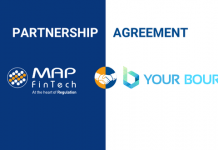In a world becoming ever more digitalised, the need to ensure a smooth and strong customer experience has become increasingly necessary. For those looking to ensure that they can deal with regulatory and compliance issues efficiently, RegTech for many can be the silver bullet.
The pandemic has led many more people to turn to the digital world to conduct a wide range of business matters. With the amount of people now working from home following the uprooting caused by the pandemic, dealing with regulatory and compliance matters digitally is becoming vital.
“Central to RegTech’s purpose is making regulatory and compliance processes more efficient,” said Stacey English, Theta Lake’s director of market intelligence. “So, it’s no surprise that compliance users themselves have a much-improved experience from utilising RegTech to undertake day-to-day regulatory activities and obligations. Many regulatory processes are hugely intensive. Take having to listen to endless hours of Zoom, Webex or Microsoft Teams video or audio calls to determine if there has been instances of market abuse or other misconduct.”
Using RegTech, English claims, with the AI, ML and NLP that underpins it, removes such time-consuming burdens by automatically surfacing risks. She cited her company’s platform, which pinpoints where security and compliance risks occur within what is spoken, shared, shown or typed in collaboration tools, making supervisory processes more efficient. This, she states, allows compliance teams to focus on dealing with other issues to protect their firms and customers, rather than spending their time on manually reviewing content.
English continued, “The benefits extend to the experience of end customers too. While 91% of organisations are using multiple collaboration tools as the primary means to communicate internally and with customers, in practice 83% turn off access to features because of compliance concerns. With technology like Theta Lake’s providing the security and compliance infrastructure to safely use modern communications, organisations are able to have much more engaging and productive meetings.”
She noted that a key concern for customers is making sure that their personal data is protected. Considering this, English added that the fact Theta’s platform can automatically redact any information shared so it’s not exposed further during compliance review processes provides great reassurance.
Customer is king
When it comes to the appeal of RegTech, sitting alongside the desire for better security is better efficiencies and speed – two key pillars of any successfully customer experience strategy.
Muinmos has developed a regulatory compliance engine and KYC/AML platform with a key aim of improving the customer experience for its clients through its automated onboarding process. According to Muinmos CEO Remonda Kirketerp-Møller, by automating and speeding up the entire onboarding processes, the company has eased the burden for compliance teams and enabled financial institutions to deliver a better customer experience.
She said, “In today’s competitive market, the customer is king and it is therefore paramount to make the regulatory and compliance process as efficient, streamlined and smooth as possible. In our view, financial institutions no longer onboard clients. Instead, clients onboard them – so if a financial institution doesn’t have the smoothest of onboarding processes, supported by the most user-friendly and efficient KYC/AML platform and onboarding tools, they are in danger of alienating clients from the outset. You only get one chance to make a first impression – so you need to make it count.”
In the eyes of Kirketerp-Møller, there is a fine balance which must be considered by financial institutions at the onboarding stage. Speed is a key part of the customer experience, she states, but quality and compliance must not be compromised in the process. “Financial institutions need to carry out a measured KYC/AML process but also need to be mindful that no one wants to read long lists of instructions and answers dozens of questions born in the minds of regulators ten thousand miles away. We open accounts on Google and Amazon and countless other websites all the time – two screens and you’re done. Who has patience for more than two screens? This is exactly what compliance teams need to be mindful of when addressing client onboarding.”
While customer experience is commonly seen as the above-the-surface features such as speed, Kirketerp-Møller detailed that it goes much wider than the speed of opening an account, “Correctly classifying clients and capturing accurate suitability and appropriateness information is just as critical. After all, what would be the point of onboarding clients quickly if you are then enabling them to trade products that aren’t suitable for their level or experience or jurisdiction? The financial institution would be exposed to risks of fines for regulatory breaches and reputational damage for delivering low levels of investor protection.”
A digital world
Despite the nose-bleed pace of digitalisation across many parts of the financial world, there are still some stakeholders who remain loyal to the manual and tried-and-tested processes. However, with technologies coming on leaps and bounds in the RegTech world, it is becoming much harder to justify this choice in a business sense.
Clausematch VP of account management Emma Kempton has noticed this trend, especially in the area of compliance. She said, “In an increasingly digitised world, compliance teams are still often bogged down in archaic processes. They literally don’t have the time to engage in more value-add activities such as training, education, effective policy management or improving customer experience.”
Kempton raised the example of code of conduct compliance risks. She said that these have become an ‘annual box-ticking exercise’ rather than weaving ethical standards into the fabric of an organisation. RegTech, she claims, embeds this function into the company’s DNA.
Kempton continued, “From what I hear from our clients, using the Clausematch RegTech platform enabled them to ensure that only the current version of their company’s policies and procedures are available for their employees to gain access to and read. Where changes are made to ensure they are in line with changing regulations and requirements, their employees have access and are asked to attest to these changes too. The policy update process is faster with Clausematch using online collaboration, allowing time for teams to gain real insights about how their employees interact with policies. They are able to address questions and queries that employees may ask to gain further knowledge or check their understanding. This leads to employees having a better understanding of the company policies and procedures.”
Kempton concluded that from their customer’s perspectives, employees are ‘more knowledgeable, compliant with up-to-date information from regulators, manage customers in a way that is consistent with the business ethics and ethos and their experience is enhanced’.
Simplifying the experience
When it comes to managing regulatory compliance, the process can be very often seen by some as nothing more than a box-ticking chore and somewhat of a drain of customer experience. But is this really what it is?
Ben Parker – CEO and founder of eflow Global – disagrees with this idea. He said, “A common misconception is that regulatory compliance is nothing more than a legal obligation, an annoying but necessary box to tick if you want to avoid fines or other sanctions. But this simply isn’t the case. A good compliance system can actually help the user’s business in more ways than they might initially realise, and ensuring they are aware of this fact is key to improving the user experience of RegTech products.”
Parker underlined that one of the key issues impacting UX of RegTech technologies is the sheer complexity of most products currently on the market. He said, “Too many systems on the market today overload the user with confusing workflows, cluttered interfaces and high volumes of data. At eflow, we exclusively build exception-based systems which minimise the amount of data shown to the user at any one time, making it easier to analyse and process the information being displayed.”
He added that once the act of using a system is simplified, the user can see the benefits that accompany a good compliance system more. He used the example of best execution monitoring, which is regularly requirement for most firms. However, the data collected for this purpose also offers invaluable information on how to streamline your trading, identify slippage, minimise unnecessary losses and compare performance against relevant market data. But if a user is unable to understand the finer details of what their system is showing them, Parker states, how will they be able to reap these benefits?
Parker summarised, “I think we need to reframe compliance not as simply as an obligation, but as a business tool. Once this attitude has been adopted, solutions will naturally begin to place greater focus on simplifying user experience in an effort to help them make better use of their RegTech technologies and the invaluable data contained within.”
The key reason many RegTech firms put forward for why others should adopt regulatory technologies is simple and constant – it makes the process easier for all involved. Maciej Piechocki – CRO of Regnology – echoed a similar sentiment.
He said, “Regulatory technology has the specific purpose of rendering the management and reporting of financial regulatory data easier and more reliable for both regulators and regulated financial institutions. The large amounts of complex and increasingly granular data that banks, supervisory authorities and regulators deal with means that regulators need to manage, collect, process and analyse this information quickly and accurately. So, what today’s regulatory environment is increasingly turning to are greater levels of automation and end to end solutions with calculation engines, data marts, workflows, dashboards and analytics.”
Piechocki cited that through RegTech, reporting is made more user-friendly through more effective data models that are able to generate high quality data for different regimes with less effort. This then enables regulators to be empowered with the right data quickly and effectively therefore ensuring they are able to protect financial market stability and communicate efficiently with the banks themselves.
The Regnology CRO also underlined RegTech providers ability to constantly evolve portfolios of support and end-to-end services such as managed services, SaaS and cloud to support a better and more comfortable user experience for all involved.
Stefanos Daniel – sales and relationship manager of MAP FinTech – also underlined that RegTech has provided the ability for stakeholders, especially in the area of regulatory reporting, to take the proverbial weight off their backs when it comes to manual tasks.
He stated, “The work carried out by the standard operations professional tasked with regulatory reporting activities radically changed in the early 2010s. These responsibilities were primarily spreadsheet driven and required in-depth knowledge of the regulatory scope. In addition, professionals in this field needed to have a strong command of the Trade Repository or Approved Reporting Mechanism interfaces and terminology, both of which interpreted and laid out their schemas and validations in wildly differing ways.
The well-documented struggles for some regimes with pre-matching, as well as the ability to reconcile reports received from end points by understaffed regulators, meant that it wasn’t just the firms required to report that were under pressure when it came to efficiency, accuracy, and timeliness.”
Daniel underlined that there has been a ‘steep rise in competition’ as well an increased quality of interfaces available and the number of reports returned. Focus by RegTechs turned to what needed to be done, and how it could be achieved in the most cost-effective and efficient way possible.
RegTechs, Daniel stressed, looked at the process as a whole, ensuring transparency when handling data meant that firms could see where action was required and when mistakes had to be rectified at any part of the process. Firms were able to import data directly from the user, load it onto their system and start work on it, which meant operations and compliance professionals could focus on errors rather than large and unwieldy data stacks.
Daniel concluded, “In short, reporting parties found that, whilst regulation undoubtably posed a burden on their business, they could claw back important time and effort previously spent by their operations and compliance staff, and instead direct that work to their core business, knowing that they remained compliant and retained full oversight.”
Not just digitalisation
When considering what makes a good customer experience, there is a tendency for many to highly equate this with automating and digitalising processes to make a customer journey seem more efficient and time effective. However, as stated by iMeta, this doesn’t change how people feel – good customer experience should contain the elements of quality, timeliness and a joined-up service. How can this be achieved?
The company said, “Our approach is built on three pillars. Personalisation, which means giving clients the ability to meet their own specific requirements, driven by a need to personalise the service for their own clients. Secondly, ownership – we believe ownership of CX shouldn’t just sit with the relationship manager, but should be owned by every part of the organisation. That way you can tailor the journey in a collectively owned way.”
The final pillar is support, “When things go wrong, we fix it, but you can avoid this in the first place by truly automating highly manual processes – not just digitising them – to collect data and assess risk effectively.”
How can financial institutions stay ahead of a changing world of customer experience? According to iMeta, a key part of this involves streamlining internal processes to improve the onboarding experience for the customer, while freeing up capacity of the front office to drive more sales and holding on to market share.
The firm remarked, “Enabled by technology, FIs must seek efficiencies through the creation of a global policy and single view of the customer, enabling documentation to be re-used across the organisation and the onboarding process. With clear strategies around smarter use of RegTech, people, process and data you can free up their time to provide a truly personalised, reliable and joined-up customer experience at every touchpoint.”
What is the result of this? The company said this leads to less onus on the customer to provide documents, removal of duplicated work for internal teams, faster onboarding, happier customers and greater market share.
Asset management
In the area of asset management – like any other industry – efficiency, security and effectiveness all go far. This is why RegTech can also play a key role in helping customer experience in asset management.
Kunal Grover – head of business development at Zeidler said, “In the asset management industry, delivering a positive customer experience while keeping on top of continuous regulatory change is an ongoing challenge. We see more asset managers beginning to manage regulatory change in a business-as-usual manner while also focusing on the customer experience.
“RegTech can help by streamlining processes, organising data more effectively, extracting insights, and enabling collaboration. Innovative new solutions can tick many boxes, including giving customers an enhanced experience, dealing with regulatory challenges, and introducing efficiencies. Asset managers are increasingly engaging with RegTech providers to harness the opportunities. I believe we will see the benefits of RegTech be felt across the industry over the coming years, including the investors.”
Copyright © 2022 FinTech Global











